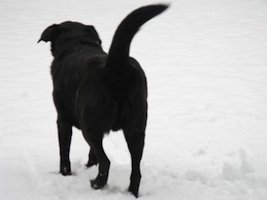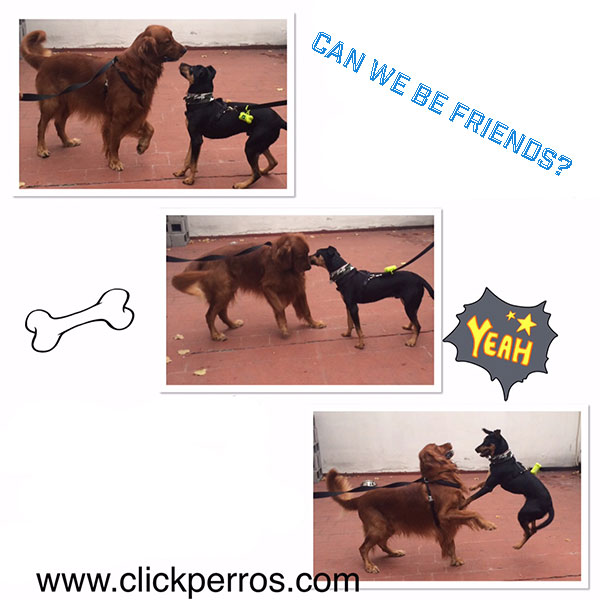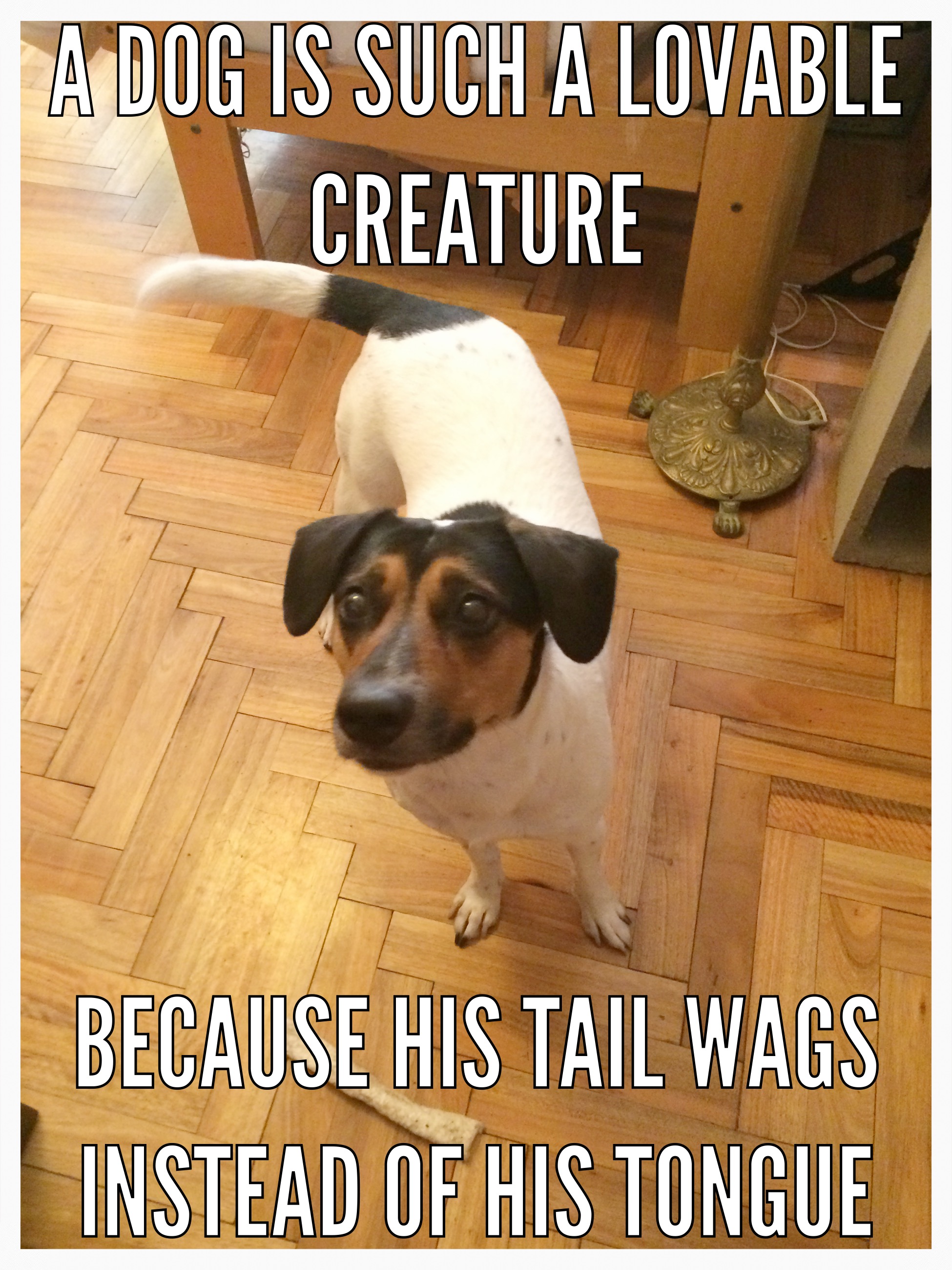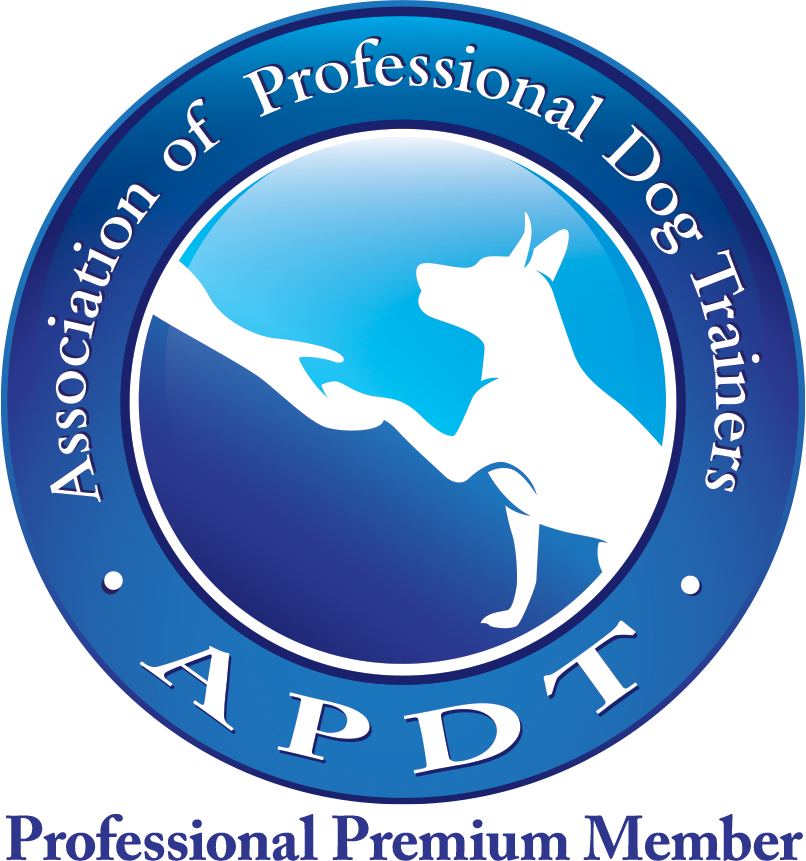I try to write my posts as unbiased as possible and recommend the products I consider to be useful and the best. I use affiliate links, this means that–at no extra cost to you–I can make a commission on a purchase you make after clicking on them. As an Amazon Associate I earn from qualifying purchases.
Understanding Dog Body Language in Aggression
Understanding dog body language in aggression is important for every dog owner. Even if you have the friendliest puppy, you don't know how the dogs he encounters will be and should be ready to recognize a threatening dog.
Dogs can be aggressive for several reasons, however the most common one is fear. Fearful dogs will have a completely different body language than threatening dogs, sometimes labeled "dominant dogs".
When a dog displays threatening signals it is imperative to respond appropriately, most often by slowly getting away from that situation.
Understanding body language means that you will need to watch the whole body of the dog and also take the context into consideration. Other hounds around will also help you understand body language, by looking at their reaction (keep playing vs. walk away) you can "see" what the other dog was telling them.
Understanding Dog Body Language in parts
Share your pets pictures with us! Click Here and show what YOUR dog is saying!
I will discuss how different body parts change in an aggressive dog, compared to calm or alert dog. In the end you will need to put each one of the signals together and decide whether a dog is aggressive or not. Some body signals can be seen in different situations. For example, a wagging tail does not necessarily mean a dog is friendly and happy, for example if the dogs is frozen and staring at you.
Also, different dogs come in different shapes and sizes and some even have their tails and/or ears clipped. This makes understanding body language a lot harder, so consider keeping your dog's parts intact.
Understanding ears
|
 |
|
 |
|
 |
Understanding tails
Dogs communicate using their tails, that is why I highly advice against surgically clipping it. You are cutting his way of talking to other dogs! Understanding dog body language means that you will now know that a wagging tail is not always a friendly sign.

- High tail: The tail could be stiff or wagging and these are signs of arousal. This could mean a dog is excited and playful or excited and aggressive! Look for other body cues to find out!
- Low to medium tail: If the tail is slightly moving it shows calm friendliness. If the same tail moves much faster, then it could be a sign of submission and friendliness.
- Low or tucked between the legs: This usually shows a fearful or submissive hound.
- A wagging tail indicates that a dog is aroused, he may be friendly or he may be ready to attack. A friendly wagging tail is often accompanied with a dog that wiggles, while a threatening tail will belong to a stiff dog.
A scientific study has shown that when dogs are really happy they will wag their tails a little bit more to the right. When they feel negative about something they are biased towards wagging their tails to the left!
Understanding dog body language postures

An alert dog may look slightly similar to a threatening dog that is not showing teeth yet. Alert dog positions include standing, sitting or laying down; most threats involve a dog that is standing up.
Alert postures do not necessarily mean aggression or dominance. Just that the dog is ALERT and ready to act, this could be to play, to run away or to attack, depending on the situation. Alert postures will show bodies slightly tense, leaning forward and standing a little taller.
On the picture to the left you can see how initially the dogs are a little uncertain as their are both with a stiff posture, the tall golden retriever is alert and showing some signs of playfulness, while the black dog is showing some signs of fear. Clearly in the end the resolved the situation and decided that play was the best course of action!
Threatening dog postures are an exaggeration of an alert posture and may be accompanied with a hard stare and frozen body.
- Body leaning forward: Like mentioned before, could mean alertness. So, pay attention to other body signals as well.
- Stiff posture: the dog freezes and stays frozen for several seconds.
- Walking straight: in the dog world, walking straight to something or looking directly into something is a sign of threat. If a dog is walking directly towards another dog with a stiff posture, this may be a warning sign to you.
- Placing the head over the back or neck of another dog: Placing your body above the dog can be threatening, this is the dog version.
Understanding dog body language to prevent dog aggression
Most aggressive dogs react so quickly because they have been punished when they were giving early signals with their body. Never punish your dog for growling or showing teeth! Just take him out of the situation as calmly and quickly as possible.
Why?
Because if you punish him for showing teeth and growling, next time he will go straight to biting!
Understanding the face

Photo by cynoclub
- A threatening dog will most likely be growling and showing teeth. Often, the way the teeth are shown can tell you a lot about how the dog is feeling. A low growl with teeth showing but the mouth somewhat closed (lips pulled forward instead of backwards) is a sign of threat. A dog may also have his mouth completely closed and still be a threat!
- In the dog world, one of the most clear signs of threat is a stare, looking straight into the eye of another dog for several seconds, this is called a hard stare.
Put it all together!
Understanding dog body language is important to prevent attacks and aggression in dogs. You must always look at the WHOLE body to determine his state of mind. As you have learned a wagging tail is not always friendly and some dogs may be a threat even if they are not showing their teeth.
Put all the information together to safely interact with your furry best friend!
Related articles in this series:
- Introduction to dog body language
- Understanding dog body language of fearful pets
- Calming and play signals
- How to help an aggressive and fearful dog?
Home > Dog Behavior > Dog Body Language > Body Language of Aggressive Dogs





New! Comments
Questions? Anecdotes? Tips? Leave me a comment in the box below.